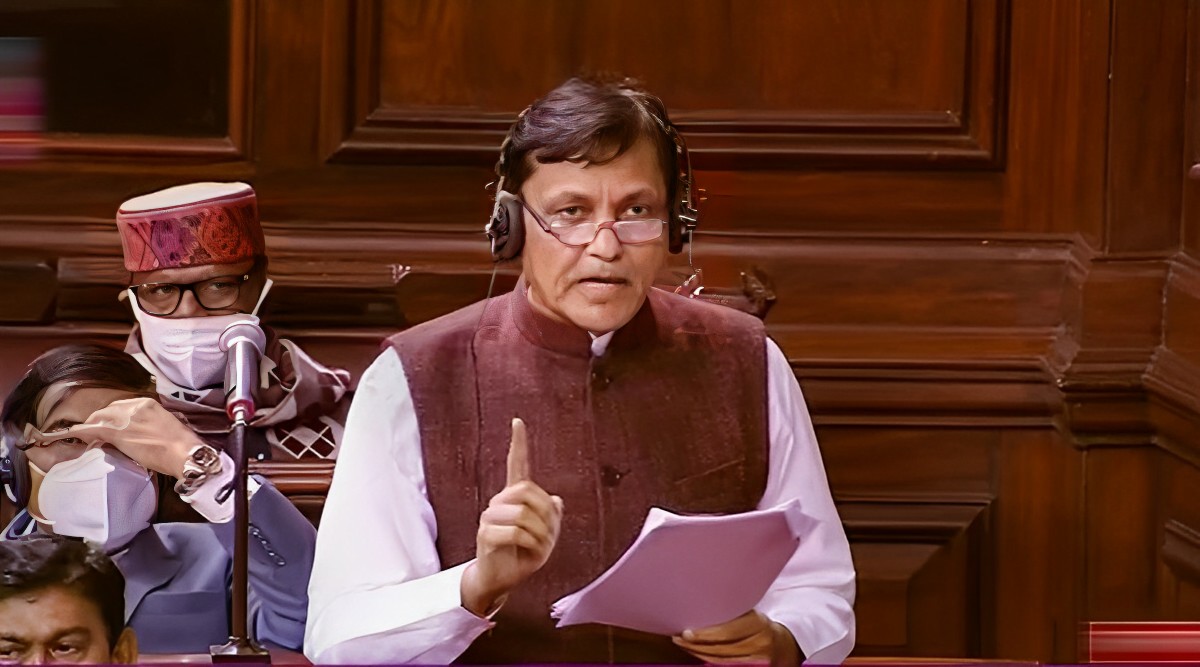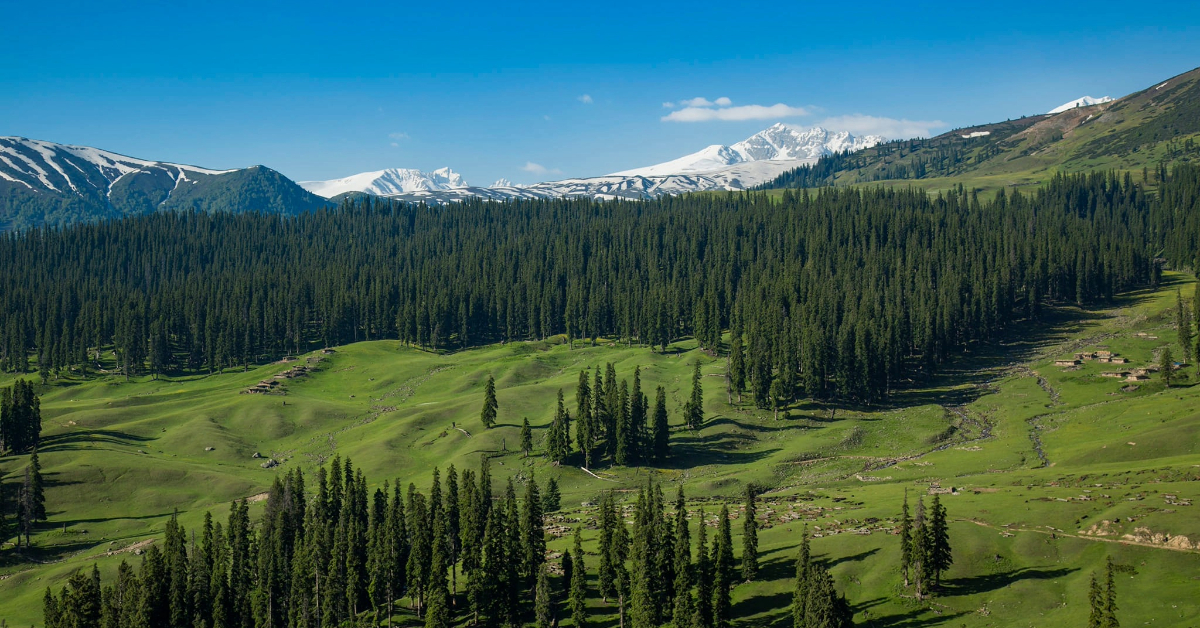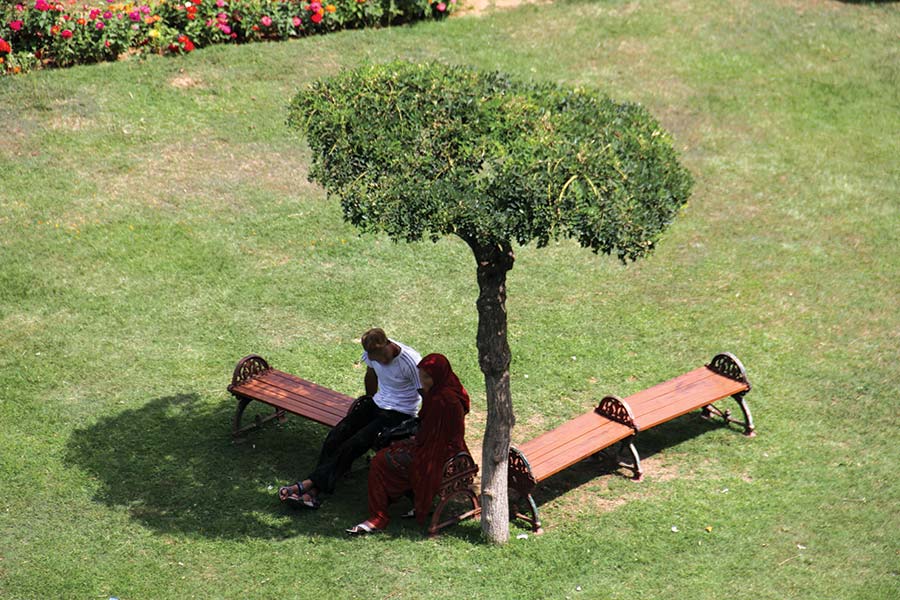by Raashid Andrabi
SRINAGAR: Asserting key improvements in various socio-economic parameters, the MHA told the parliament that the government has undertaken various measures to strike a balance between security needs and developmental initiatives in the Jammu and Kashmir after the abrogation of Article 370. Nityanand Rai, Jr Home Minister gave details about the developments in response to the question of a Rajya Sabha member, Lt Gen D.P. Vats (Retd).

Rai mentioned that after abrogation of Article 370, Jammu and Kashmir and Ladakh have experienced significant positive transformations in governance, developmental undertakings, and security measures.
In Jammu and Kashmir, Rai highlighted improvements across various sectors. The Prime Minister’s Development Package 2015 includes 53 projects underway with a total investment of Rs 58,477 crore. Notably, 32 projects have been completed or substantially completed, reflecting tangible impacts in Roads, Power, Health, Education, Tourism, Agriculture, and Skill Development.

“In healthcare, seven new Government Medical Colleges have been operationalized, along with the addition of 800 MBBS seats, totalling 1300 seats. Academic sessions of All India Institute of Medical Sciences (AIIMS), Jammu, and AIIMS, Kashmir, are now operational. On the education front, Indian Institute of Technology (IIT), Jammu, and Indian Institute of Management (IIM), Jammu, are fully functional,” Rai said.
Under Hydro Power generation, Rai said, MoUs have been signed for the development of five Mega Projects, contributing to a total capacity of 4134 MW. Notably, significant strides have been made in the Transmission and Distribution sectors, with new grid stations, transmission lines, and smart pre-paid metering implementation.
The road infrastructure has seen substantial growth with 8,086 km of road length constructed under the Pradhan Mantri Gram Sadak Yojana (PMGSY). A significant achievement is the upgradation of the Jammu-Srinagar National Highway, reducing travel time from 8-10 hours to 5-6 hours. Air traffic has doubled since 2019, and night landing facilities are now available in Jammu and Srinagar, he added.

Under the Jal Jeevan Mission, tap water connections have been provided to about 13.54 lakh rural households. Additionally, irrigation and flood control initiatives, including the Shahpur Kandi Dam Project and the completion of the Flood Management Program of river Jhelum, have been instrumental in enhancing water management.
To boost industrial development, Rai said that the Government of India has allocated Rs 28,400 crore. Various policies, including the J&K Industrial Policy 2021-30, aim to make the UT an investor-friendly destination. Agriculture has seen the implementation of the “Holistic Agriculture Development Plan,” covering high-density plantations and benefiting farmers with schemes like PM Kisan.
“Jammu and Kashmir has emerged as a global tourism hub, hosting the 3rd Tourism Working meeting of G20 in Srinagar. The tourism sector has witnessed unprecedented growth, with over 1.88 crore tourists visiting in 2022 and 1.85 crore till October 2023. The establishment and registration of homestays further cater to the increasing footfall,” he added.

Regarding social inclusion, Rai said that the AB-PMJAY-SEHAT Scheme has marked a significant stride towards universal health coverage in the Union Territory of Jammu and Kashmir. Digital initiatives such as Ayushman Bharat Digital Mission, Ambulatory services, e-sanjeevani, Tele-Radiology, Telemedicine, Tele-X-Ray, Tele-CT, Scan and Share, Chatbox, and Tele-Manas have been implemented, leveraging technology for improved healthcare services.
The implementation of a Uniform Academic Calendar across the UT has not only increased the number of teaching days but also aligned the academic calendar with the national schedule. Efforts towards social inclusion include 10% reservation for Economically Weaker Sections, 4 per cent reservation for Pahari Speaking People, and extension of reservation benefits to residents near the International Border.
100 percent saturation has been achieved in Old Age, Widow, and Divyangjan schemes, benefitting 10,38,154 pensioners with a monthly payout of Rs 1000. Transgender individuals are now covered under Social Security Schemes. To empower women, horizontal reservation of 15 percent in direct recruitment has been provided in Non-Gazetted ranks in J&K Police Services.
Inclusive development of the tribal population is a priority, with 2306 Forest Rights Certificates issued under the Scheduled Tribe and other Forest Dwellers Act. The government has undertaken transparent and fair recruitment, finalizing 31,830 selections (Gazetted and Non-Gazetted) since 2019. Youth engagement in sports has surged, with over 62 lakh participants in various activities in 2022-23, a significant increase from less than two lakhs in 2018-19. More than 5 lakh youth are associated with Mission Youth.
Over the last four years, the J&K government has achieved commendable milestones in digital transformation, e-governance, and technology integration, revolutionizing the way public services are delivered. Various IT initiatives have been implemented to provide seamless Government-to-Citizen (G2C) services, ensuring citizens can access essential services online, eliminating the need for in-person visits and enhancing efficiency.
The outcomes of these initiatives are reflected in the 100% saturation of various schemes across the UT, ensuring access to basic amenities like portable water, healthcare, road connectivity, and financial support for vulnerable groups. In Ladakh, under the Prime Minister Development Package, nine projects at a cost of 21,441 crore have been undergoing a remarkable transformation, focusing on enhancing road connectivity, rural infrastructure, and drinking water supply.
The Jal Jeevan Mission in rural Ladakh stands out, with over 85% of households now having clean drinking water supply through taps, a substantial improvement from 3.33% in 2019. Ladakh has witnessed a paradigm shift in healthcare, education, and various sectors, with the establishment of a 170-bedded District Hospital in Kargil and increased bed capacity.
In education, there has been a surge in student enrollment in government schools, coupled with innovative initiatives like providing preloaded educational tablets to students. Astronomy and astro physics labs have been set up in schools, fostering a culture of scientific exploration. The tourism sector in Ladakh has seen substantial growth, with an increase in tourist influx from 2,79,937 in 2019 to 5,31,396 in 2022.
Additionally, sports infrastructure development, inclusive growth initiatives, and unique projects in Changthang are contributing to the overall progress of the region. Initiatives aimed at inclusive growth have been prioritized in Ladakh, including Unique Disability IDs, awareness programs on drug abuse, and social assistance schemes. The government’s focus on entrepreneurship is evident in the sustainable industrial policy and the recognition of local products with Geographical Indication (GI) certification.
Engaging the youth has been a focal point in Ladakh, with various cultural, academic, and sports activities organized under slogans like “My Youth My Pride” and Har Din Khel Har Ek ke Liye Khel. Youth have been facilitated with rewards and appreciations, contributing to a significant reduction in youth joining militancy.















